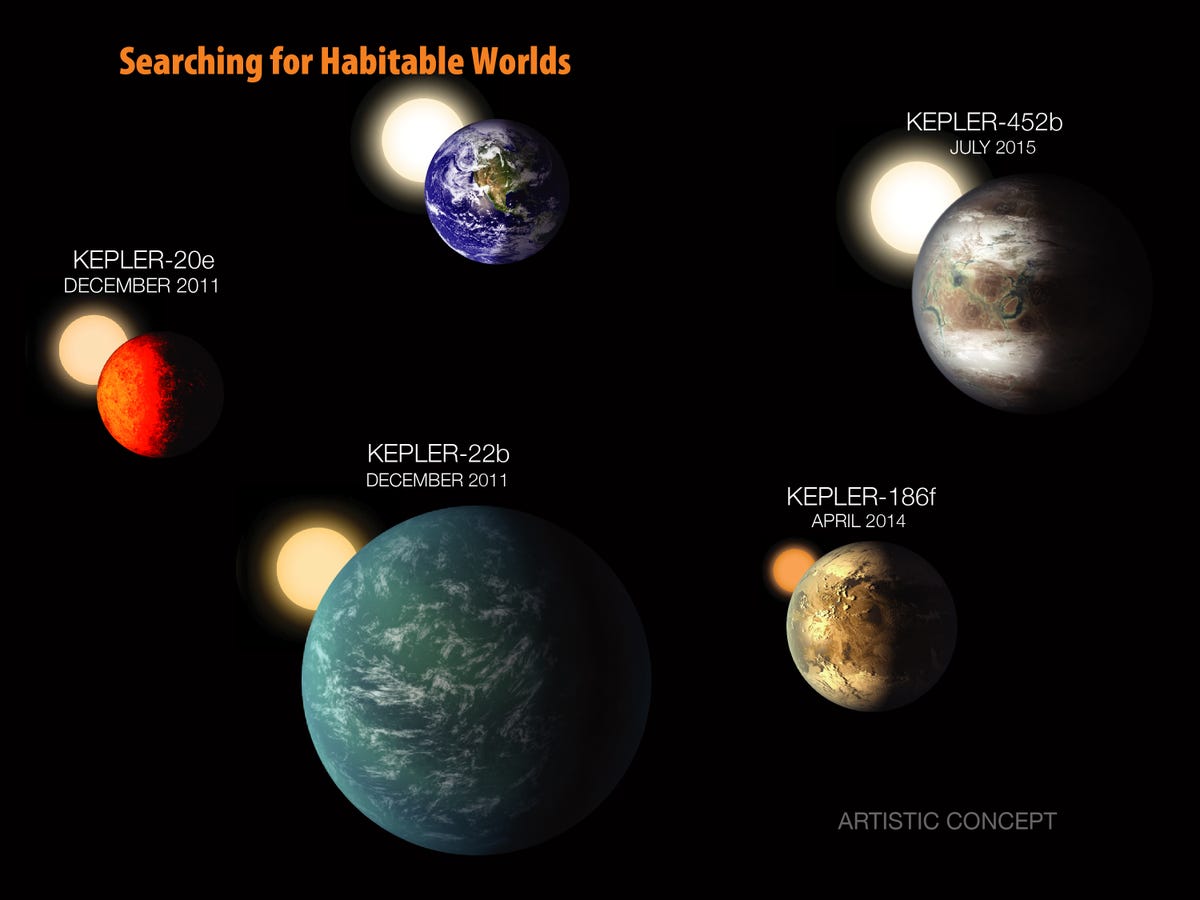Kepler-452b, Earth's 'cousin,' in more detail (pictures)
NASA has spotted a distant planet that's as close as it comes (so far) to the one we call home. Here's a look at how it compares with other recently discovered planets -- and with our rock.

The Kepler Earth-like exoplanet family
Kepler-452b, announced Thursday, is the first near-Earth-size planet in the habitable zone of a star very similar to the sun. It's also known as an exoplanet, which is a planet that orbits a star that isn't our sun.
Here, the history of Kepler's search as told by some of the planets it's found.
Meet Kepler-452b
This artist's rendering of how Kepler-452b might look shows a "super Earth" hosting rocky surfaces, water and a thick atmosphere.
Solar system comparison
The Kepler-452 system is comparable to our own solar system, though no other planets have yet been confirmed.
Here it is also compared with the tiny Kepler-186 system, found in April 2014. It hosted the nearest known thing to an Earth-like exoplanet before Kepler-452b's discovery.
A close cousin
This GIF shows how much more similar the newly found planet is to Earth than other Kepler-discovered planets in terms of distance from its sun and temperature of the nearest star.
An older cousin
Because Kepler-452b is over a billion years older than Earth, it may also have fewer years before all its water dries up (presuming it has some now). Being bigger, though, will forestall the inevitable loss of any water it has now for perhaps 500 million years, says NASA.
Kepler's Earth-y family members
Kepler has found several Earth-like planets in the habitable zone, but Kepler-452b is the first orbiting a star like our sun.
New planet candidates
A look at how the newest unconfirmed planet candidates announced Thursday stack up to Kepler-452b and Earth.
Progress in planet spotting
Kepler-452b and one of the first exoplanets identified in the 1990s. Kepler has been able to spot much smaller, Earth-size planets.

